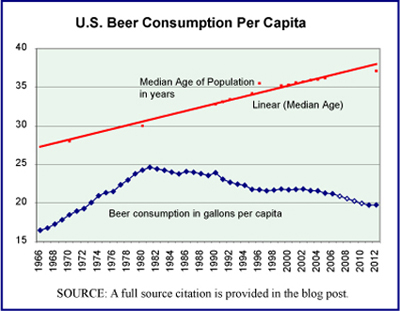Faced with a greater variety of beverage choices, including exotic juices and energy drinks, and higher prices for orange juice due to the spread of citrus greening disease, consumers are increasingly choosing those alternatives over the breakfast staple, orange juice. Total U.S. retail unit sales in the 2012-2013 season reached its lowest level since the 1998-1999 season.
Data show the total U.S. retail sales of orange juice by volume in the 2012-2013 season.
Geographic reference: United States
Year: 2012-2013
Market size: 563.2 million gallons
Source: Alexandra Wexler, “The Slow Death of a Former Breakfast Table Star,” The Wall Street Journal, October 14, 2013, available online here.
Original source: Nielsen
Posted on October 29, 2013

